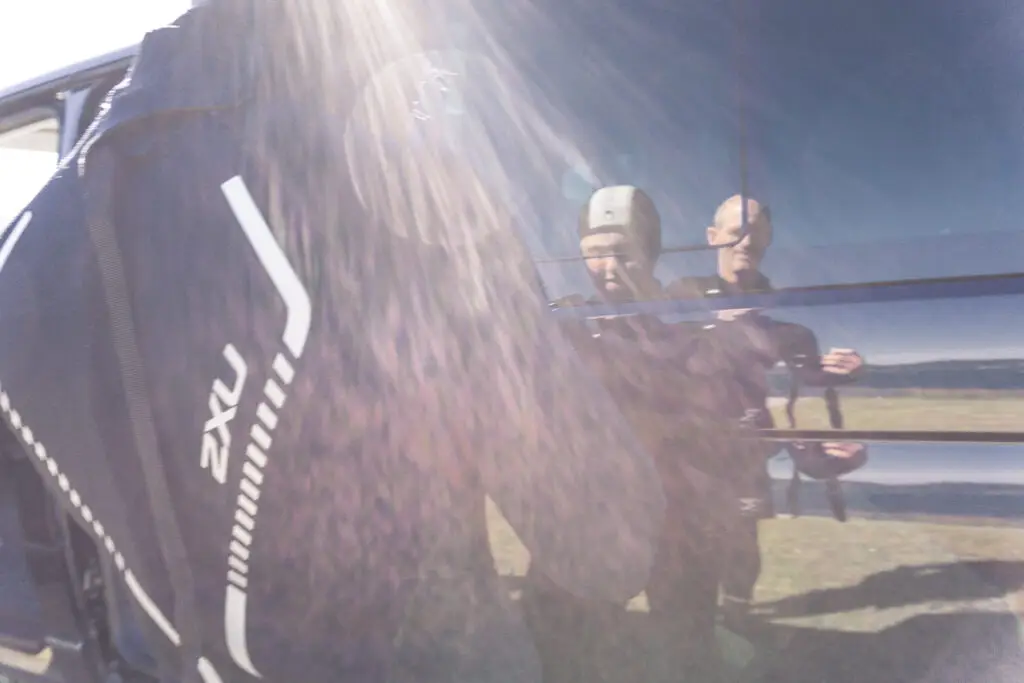What is an anxiety disorder?
Anxiety disorders are a collective term for conditions characterized by anxiety or fear. Anxiety is often accompanied by symptoms such as irritability, sadness, fatigue, headache, numbness in the hands and feet, muscle aches, tremors and twitching, difficulty breathing, sweating, difficulty concentrating and sleep problems.
Some forms of anxiety are associated with specific objects or situations (phobic anxiety), others are not related to specific things, and you do not know what you are afraid of. The condition may be characterized by persistent anxiety, restlessness and irritability (GAD. Generalized anxiety disorder) or come as sudden seizures (panic attacks).
A feature of anxiety disorders is the development of avoidance behavior, where one centrally avoids places or situations that one believes will provoke the anxiety. Avoidance behavior is a major cause for concern, and the biggest problem for the person’s daily functioning.
Table of content
- What is the link between PTSD and anxiety?
- Why are veterans at risk of having an anxiety attack?
- How many combat soldiers have PTSD and / or anxiety?
- Can you have both PTSD and anxiety?
- How to deal with anxiety if you are a veteran.
- What can I do right now if I have anxiety?
- How to control the mind?
- What types of anxiety are there?
- Generalized anxiety disorder
- What is Posttraumatic stress disorder?
What is the link between PTSD and anxiety?
In addition, having anxiety and panic attacks are sometimes symptoms of post-traumatic stress disorder (PTSD). PTSD is a severe anxiety disorder in veterans who have gone through a traumatic experience, and which can cause daily anxiety, changes in sleep patterns and flashbacks.
However, a PTSD-triggered anxiety or panic attack is more sudden and more intense (in less time) than the daily anxiety one may experience with one of the other anxiety disorders.
Sometimes the physical illnesses of an anxiety attack can be so serious and frightening that one might think one has a heart attack. You may feel weak, dizzy and experience chills or hot flashes.
On the emotional side, an anxiety attack can cause intense feelings of panic and a sudden, uncontrollable fear of dying.
Why are veterans at risk of having an anxiety attack?
The fear of dying during an anxiety or panic attack is common because the attacks are caused by triggers from traumatic events. This is one of the reasons why so many veterans and military personnel experience anxiety attacks.
A trigger can stem from any traumatic event. In veterans with anxiety, memories of a traumatic event evoke the fight-or-flight reflex. In this case, the body has no choice but to react as you are in serious danger, even if you are in a relatively safe place – such as in a grocery store.
I myself have experienced anxiety attacks in the grocery store. The reason why a particular store gave me this feeling and not other stores, was according to my psychologist decor in the store. There were high shelves, with little or no overview for me. Still, there were a lot of people present.
What probably triggered the anxiety and made me stand sweaty and red in the face in front of the clerk, was probably the lack of overview in a situation where I felt danger if I did not have this overview. I even remember the situation back in the military service that could have been the origin of this trauma.
In short: Because one has experienced a traumatic event, the mind and body are not able to recognize that one is safe at the moment.
How many combat soldiers have PTSD and / or anxiety?
In a larger study of 60,000 Iraq and Afghanistan veterans, 13.5% of deployed and non-deployed veterans were screened positive for PTSD, while other studies show that the rate is as high as 20% to 30%.
As many as 500,000 American soldiers who have served in these wars in the last 13 years have been diagnosed with PTSD. The probability is high that this applies to other countries as well. If you have PTSD, the probability is high that you also have anxiety
There are also studies that show that Military veterans exposed to combat were more likely to exhibit signs of depression and anxiety in later life than veterans who had not seen combat, a new study from Oregon State University shows.
Can you have both PTSD and anxiety?
Post-traumatic stress disorder (PTSD) and generalized anxiety disorder (GAD) are two disorders that can occur simultaneously. This is not at all surprising since PTSD is a trauma and stress-related disorder that can manifest itself in different ways in people.
Anxiety often causes a number of physical symptoms, such as:
- fatigue
- restlessness
- headache
- nausea
- numbness in hands and feet
- muscle tension and / or muscle pain
- difficulty swallowing
- difficulty breathing
- difficulty concentrating
- tremors and twitching
- irritability
- sweating
- insomnia / sleep problems
- dizziness
- palpitations
- afraid to die
- sadness
- Feeling restless, “on the edge”.
- Excessive worry about everyday decisions.
How to deal with anxiety if you are a veteran.
When it comes to anxiety and panic attacks – or other concerns mental health for that matter – there are both unhealthy and healthy coping mechanisms.
Unfortunately, many veterans resort to unhealthy strategies to mask the pain.
Sometimes the veteran avoids situations that can lead to triggers, and thus anxiety attacks. But avoiding situations like these does not solve the problem – it just pushes it away for a while.
Many veterans also medicate themselves away from the problem by using drugs and alcohol. There is a strong link between having an anxiety disorder and having a substance abuse disorder, especially if you are a veteran.
What can I do right now if I have anxiety?
There are many things you can do to avoid the discomfort of anxiety when it appears in your body.
Relax.
Give yourself time to actually do nothing. A good piece of advice I have followed myself is to refrain from being updated on the news all the time. Choose a calm movie or something that does not trigger the trauma. (Maybe not watching war movies?)
Make good routines.
One of the recurring problems a veteran with PTSD is the fear of unforeseen events. As a human being, it is inevitable that unforeseen things will happen. That is called living. But it is possible to find security in creating routines for what you know you will do every day. Eat, sleep, get up, go to bed, work, pursue a hobby, be with your loved ones.
Get a routine for:
- Eating
- Sleeping
- Work or other things you need to do that require some form of performance on your part
- Spending time with family and friends
- Training
- Time alone and relaxation
Nutrition.
Many veterans with mental challenges struggle with their physical health. Although exercise is positive, it is just as important to implement a proper and healthy diet in everyday life. I will not say that one should stop drinking alcohol or smoking, although this is definitely recommended.
But at least try to eat healthy. Cut down on caffeine (poor sleep) smoke and, yes, alcohol. Make a routine of good sleep (Try to get 6-8 hours every night) Eat varied. That means little red meat, lots of vegetables, lots of water. Try not to eat too much sugar. (I will write more blog posts about sleep and diet later.)
Give yourself a break!
Do not expect to feel 100% calm and balanced all the time. Be kind to yourself and everyone around you. You do the best you can, and if you feel sad, angry, scared, etc., it’s okay, it’s normal. Again, you are human, and life is life.
Observe your thoughts.
What we think can affect how we feel.
Although I am not an ardent supporter of so-called positive thinking, it is a fact that positive thoughts, breeds positive attitude, which in turn breeds positive behavior. Therefore, it is true that if one constantly thinks “negative” and ponders problems, it will make the anxiety worse. If we can change the way we think, we can begin to feel better about ourselves and our lives.
Our thoughts can often be unfair, biased and negative. This happens automatically. But thoughts are just that – thoughts. They are related to our feelings in the situation and therefore very dependent on how you feel.
If you are tired, negative thoughts will often arise. How often do we not notice how easily negative thoughts and “big” problems arise in the evening, because we are tired? The next day we think, “Why did I see that as a problem?”
How to control the mind?
Look objectively at what is going through your head.
- Record information about the situation or context in which you noticed a change in emotions or negative thoughts. (What happened yesterday that makes me think the way I do today?)
- Often there is a trigger you did not notice. A loud sound, an observation that made you “go back” in a war situation for a short second. (Flashback) All this can cause the body and head to expend enormous amounts of energy. An energy you notice as anxiety the next day.
- Describe your feelings and body reaction and rate your emotional strength from 0-100% (100 is unbearably intense).
- Write down your thoughts.
- Question the accuracy / truthfulness of these thoughts.
- Use your senses.
- Try to see yourself from the outside and notice the body’s reaction when you feel the anxiety.
- The body and head often have a loop function. This means that if the brain tells you that something is wrong, the body will react as something is wrong. It triggers a negative loop.
Conversely, it will be a positive loop if you do not recognize that your head is right. At the same time, anxiety often starts in bodily functions. (Sweating, palpitations, etc.) This will be interpreted by the head as an increased level of danger and thus initiate a negative loop. By observing this you can stop it. Override your head when you start sweating and say to yourself.
‘This is just sweating. I’m not dying »
I myself have tried this in front of the clerk in the store where I used to have anxiety attacks. Sweating and red in the face, I thought.
‘I’m not dying. I’m sweating and I’m red in the face and it’s embarrassing, but not dangerous.”
(and probably only I see it.) It eventually worked very well.
What types of anxiety are there?
Panic disorder
Panic disorder is also called panic disorder or panic attacks. Anxiety comes suddenly and without warning, often with physical reactions such as difficulty breathing and suffocation, palpitations, increased or irregular heart rate, sweating, trembling, chest pain, nausea, dizziness, numbness, feeling of fainting and fear of death. These seizures can be very frightening.
Because the physical illnesses are so severe, you may misinterpret this and think that you have a serious physical illness such as a heart attack or stroke. This can cause you to be alert to changes in your body, and concerned about getting a faster heart rate, stronger heartbeat, fast breathing or the like.
Phobia
Phobias are irrational and intense fears of certain situations, objects or activities. It is common to divide phobias into three main types: social phobia, specific phobias and agoraphobia.
With social phobia, you are afraid of socialization with other people. It can be other people in general or certain groups of people, possibly in certain situations. Social phobia can involve an excessive fear of fooling yourself or being humiliated.
Specific phobias are about very specific objects or situations, such as spiders, heights or flights.
Agoraphobia is fear of leaving home and venturing out into areas that are perceived as unsafe. This phobia is especially related to open spaces and places with many people, such as shops, public transport etc.
Obsessive-compulsive disorder
Obsessive-compulsive disorder manifests itself as obsessive thoughts and compulsive actions. Obsessive thoughts are associated with anxiety. Coercive actions are often consequences of obsessive-compulsive disorder and serve to reduce anxiety.
Generalized anxiety disorder
Generalized anxiety disorder is a condition with “free-flowing” anxiety, meaning the anxiety is not permanently associated with specific situations or objects.
The condition is characterized by persistent strong tension, restlessness and worries, as well as somatic symptoms such as tremor and dizziness. There are often things or events in daily life that become the subject of excessive anxiety, such as worrying about your children being hurt, your partners getting sick or the like. To get this diagnosis, the condition must have lasted for at least six months.
Since GAD is often linked to PTSD, I will elaborate on GAD:
Symptoms of generalized anxiety disorder can vary.
The mentally signs may include:
- Persistent worry or anxiety about a number of areas that are not related to the impact of the events
- Evaluate plans and solutions for all possible worst outcomes
- Perceive situations and events as threatening, even when they are not
- Difficulty dealing with uncertainty
- Indecision and fear of making the wrong decision
- Inability to set aside or let go of a worry
- Inability to relax, feel restless, and feel abandoned or on edge
- Concentration difficulties, or the feeling that your mind “is empty”
Physical signs and symptoms may include:
- Fatigue
- Sleep problems
- Muscle tension or muscle pain
- Trembling, twitching
- Nervousness or slightly frightened
- Sweating
- Nausea, diarrhea or irritable bowel syndrome
- Irritability
There may be times when your worries are not all-consuming, but you still feel anxious even when there is no obvious reason. For example, you may feel intense concern for your safety or that of your loved ones, or you may have a general feeling that something bad is about to happen.
Concerns and symptomatology can change with time and age. I myself have noticed that this is a fact. I was previously plagued with sweating associated with anxiety attacks. (Totally overwhelming sweating. 4 t – shirts a day sweating) Today it rarely happens. Instead, it is other bodily reactions that have taken over. The pattern of worry has also changed.
Posttraumatic stress disorder
Post-traumatic stress disorder, PTSD, sometimes known as shell shock or combat stress, is an anxiety disorder that can occur in people who have been exposed to particularly frightening and horrific experiences such as aggravated violence, abuse, war and concentration camps, disasters, torture, rape, serious accidents or serious crimes (such as armed robbery).
Mobilization, or fight-or-flight, occurs when you need to defend yourself or survive the danger of a fight situation.
The original horror experience is often relived through inner images / “flashbacks”, thoughts or nightmares. Other symptoms include tension, drowsiness, anger, physical pain and sleep problems (“autonomic hyperactivity“) and avoidance of anything reminiscent of the traumatic event. This can be very energy consuming.
It can also be that one have difficulty concentrating and have memory problems. Formal diagnostic requirements require that the disease lasts more than a month, and that causes significant impairments in social, occupational or other important functional areas.
If you think that this article on PTSD and anxiety gave you good information, please share it with others who you think may benefit from it.
Other Resources:
HelpGuide.org can help you with:
– Helpline options and how to choose
– What to expect when calling a helpline
– Common concerns that keep people from calling
– When to seek other mental health resources

How to protect yourself from your PTSD, when the world is on fire
(It is war. And it is mine. ) The headlines that meet me today are about the war in Ukraine. Alarms going off, people fleeing,


The thin film of civilization
The thin film of civilization This picture are taken on Lesvos. Her husband and baby drowned on the way over from Turkey. This is a


How to be brave, and what is courage?
Going beyond your comfort zone Exposing oneself to discomfort, pushing the boundaries, going beyond the comfort zone are all expressions of showing courage, of being
